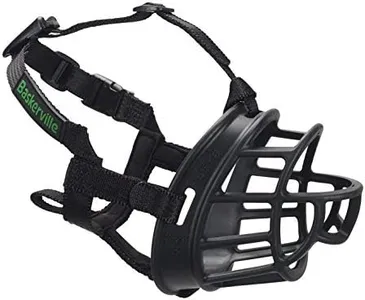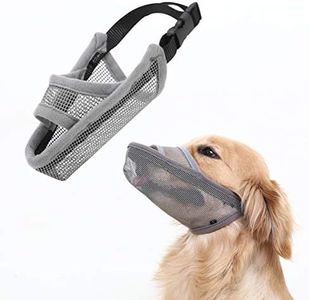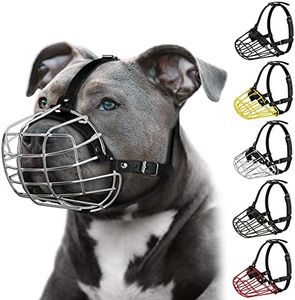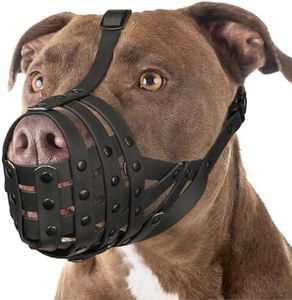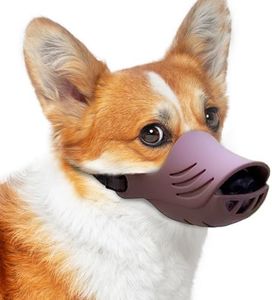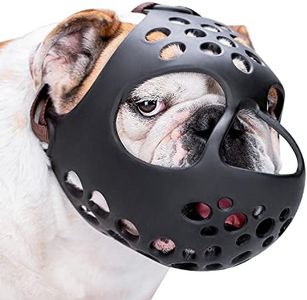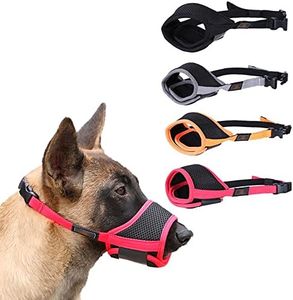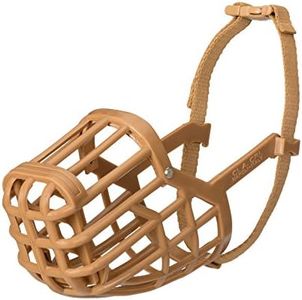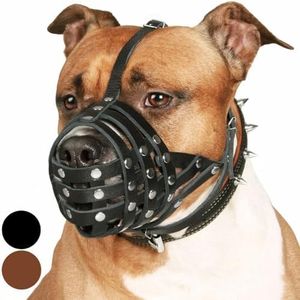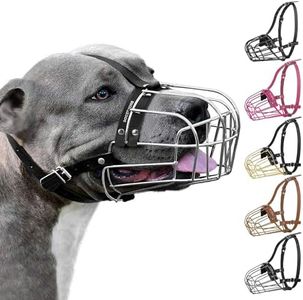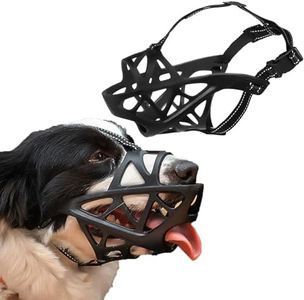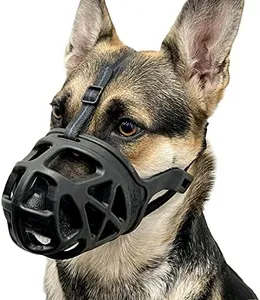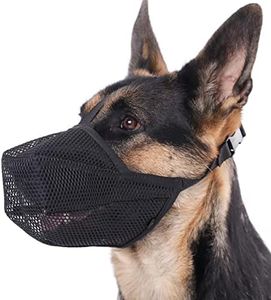We Use CookiesWe use cookies to enhance the security, performance,
functionality and for analytical and promotional activities. By continuing to browse this site you
are agreeing to our privacy policy
10 Best Dog Muzzles
From leading brands and best sellers available on the web.By clicking on a link to a third party's website, log data is shared with that third party.
Buying Guide for the Best Dog Muzzles
Choosing the right dog muzzle is all about understanding your dog's needs and the situations in which the muzzle will be used. Muzzles can help keep your dog and others safe in public places, during grooming, or at the vet. It's important to focus on comfort, safety, and the intended activity. Knowing your dog's behavior, snout shape, and how long they'll wear the muzzle plays a huge part. Always aim for a balance between safety and comfort to make the experience as positive as possible for both you and your pup.Muzzle TypeMuzzle type refers to the overall design and function of the muzzle, typically categorized as basket muzzles, soft muzzles, or specialized muzzles. Basket muzzles are made from materials like plastic, rubber, or metal and allow dogs to pant, drink, and take treats, making them good for longer wear or active situations. Soft muzzles, often made of fabric or mesh, hold the mouth more closed and are best for short-term use but can become uncomfortable or prevent panting. Specialized muzzles may be used for specific breeds or activities. Think about how long and what situations the muzzle will be used for—basket muzzles are best for safety and flexibility, while soft muzzles may suit quick vet trips.
Size and FitSize and fit are all about matching the muzzle to your dog's unique facial features, including their snout length, width, and overall head size. This is crucial because a poorly fitted muzzle can be uncomfortable or even unsafe, allowing escape or causing injury. Sizes are usually given by snout circumference and length measurements. Smaller muzzles are suited for toy and small breeds, medium for most mid-sized dogs, and large or extra-large for bigger breeds. To pick the right one, measure your dog carefully as instructed by the manufacturer, and always prioritize a secure but comfortable fit to avoid chafing or slipping.
MaterialThe material of the muzzle affects comfort, durability, and ease of cleaning. Common materials include plastic, rubber, metal, nylon, and leather. Plastic or rubber are flexible and lightweight, good for everyday use, but may not work for extremely strong dogs. Metal is very strong and durable but can be heavier and less comfortable. Nylon is soft and light but can get soggy if wet; leather is durable and comfortable but requires more maintenance. When deciding, consider your dog's strength, sensitivity, any allergies, and how often you'll need to clean the muzzle.
Breathability and Pant RoomBreathability and pant room means how much airflow the muzzle allows and if your dog can open their mouth to pant, which is how dogs cool off. Muzzles with lots of open spaces or basket designs offer the best breathability and let dogs pant, drink, and even take treats, making them best for walks or longer periods. More closed designs restrict this but may be necessary for very short-term restraint. Choose more open muzzles for active or hot environments, and closed ones only for brief uses like a quick vet visit.
Ease of Use & AdjustabilityEase of use and adjustability refers to how easy the muzzle is to put on and take off, and how well you can adjust the straps for a secure, customized fit. Some muzzles use quick-clip clasps or Velcro, while others require buckles. Multiple adjustment points help keep the muzzle in place and prevent your dog from slipping out. If your dog is wiggly or nervous, look for a model that's easy to fasten and adjust. A good fit ensures safety and comfort for your dog during every use.

